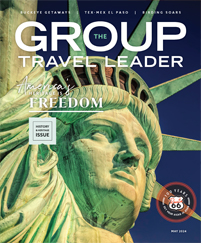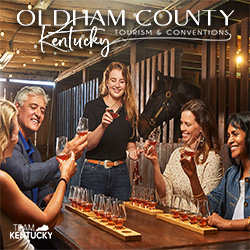If you’ve been looking for just the right time to take your group to Maryland, this is it.
The War of 1812 was one of the most defining series of events in Maryland history, and the state has been commemorating the bicentennial of those occasions for several years now. This year brings the climax of that observance as the nation celebrates the 200th anniversary of “The Star-Spangled Banner,” which was penned at Fort McHenry during the Battle of Baltimore.
Though the biggest party will happen in Baltimore during the Star-Spangled Spectacular celebration, other destinations around the state are also joining in the festivities. Groups that tour Maryland this year can take part in numerous special events in towns that played a part in the war or learn about this fascinating historical period during visits outside of the special commemorative series.
Star-Spangled Spectacular
Baltimore will be the center of the excitement for 10 days, September 6-15, as the city commemorates the birth of the national anthem with the Star-Spangled Spectacular. The events lead up to the official bicentennial of the Battle of Baltimore, which raged around Fort McHenry September 12-15, 1814, and during which poet Francis Scott Key penned “The Star-Spangled Banner.”
Groups that make the trek to Baltimore for the celebration will find numerous ways to enjoy the city. Festivities are set to include battle re-enactments and tours of Fort McHenry, as well as a flag-raising ceremony over the fort to formally mark the bicentennial of the national anthem.
In addition to the historic commemorations, visitors will find a parade of tall ships coming from throughout the country, and groups will have access to exclusive onboard tours of some of the vessels. A Navy Blue Angel air show is also on the docket.
Raiders and Invaders
The years of the war took a toll on the morale of Maryland locals, and British troops raided and occupied locations and facilities around the state. In June, Leonardtown and St. Mary’s County will take a cheeky look at the occupation with Raiders and Invaders, a three-day history and arts event.
The celebration starts in Leonardtown on Friday, June 6, with arts exhibits, concerts and lectures at various places around town. On Saturday, two stages in Leonardtown will have a lineup of musical acts featuring sea chanteys, folk music, an Army band and “British Invasion” tribute artists.
The activity expands to the entire St. Mary’s County peninsula on Sunday. Groups will find special events and demonstrations and various historic sites, including Sotterley Plantation, Historic St. Mary’s City and the Piney Point Lighthouse. There will also be Raiders and Invaders-themed programming happening at attractions, shops and restaurants throughout the area.
Battle of Bladensburg
You may not have heard of the Battle of Bladensburg, but it played a pivotal role in the War of 1812. On August 24, 1814, American and British troops clashed in Bladensburg, near the banks of the Anacostia River, and the British victory there allowed the invaders to proceed into Washington, D.C., which they famously burned.
Today, the site is marked with the Battle of Bladensburg Visitor Center and Waterfront Park, where visitors learn about the events of the war and the impact they had on life in Prince George’s County. Photos, artifacts and a film help tell the story of the war in the area, and a robust series of special events and programs help visitors to appreciate the area’s history.
Groups that visit this summer can take part in a special commemoration of the battle’s bicentennial on August 23. The event will include the dedication of a new monument, as well as a grand procession, historical trade demonstrations, cannon firings and a battle re-enactment.
Capital for a Day
During the height of the crisis in 1814, the small town of Brookeville helped hold American government together. After the British burned Washington, soldiers retreated to Brookeville, where the locals gave them food and aid. Word of the hospitality spread, and officials from capital sent the U.S. Senate’s papers to Brookeville to keep them safe. Eventually, the president and his cabinet spent two nights in Brookeville in the home of the postmaster, earning the town the nickname “U.S. Capital for a Day.”
Brookeville will celebrate its role in American history with a two-day commemoration festival, August 30-31. Townspeople will re-create Brookeville as it was in 1814, with historical interpreters playing the roles of local teachers, scientists and townspeople. Volunteers will re-enact events from that summer, including the arrival of President James Madison, guarded by 20 mounted militiamen.
Groups that attend the festivities can take part in a period dinner and musical entertainment program. There will also be a gathering of descendants of Brookeville residents and others who took refuge there.
Battle of Caulk’s Field
The rural setting of Kent County on Maryland’s Eastern Shore makes it a peaceful getaway for travelers, but its waterfront location on the Chesapeake Bay made it vulnerable to naval attack during the War of 1812. As a result, the area saw numerous military confrontations, including the battle of Caulk’s Field in August 1814. During the fight, the Maryland Militia stood up to a group of invading British marines, eventually driving them back to their ships.
This summer, the area will commemorate the events of the war with a number of special occasions. In early May, a three-day festival will include parades, games and a re-enactment of an attack that took place in nearby Georgetown, Maryland. Then, on August 31, locals will re-enact the Battle of Caulk’s Field on the 200th anniversary of the event. The re-enactment will also feature music, arts and crafts, food vendors and other festivities.











